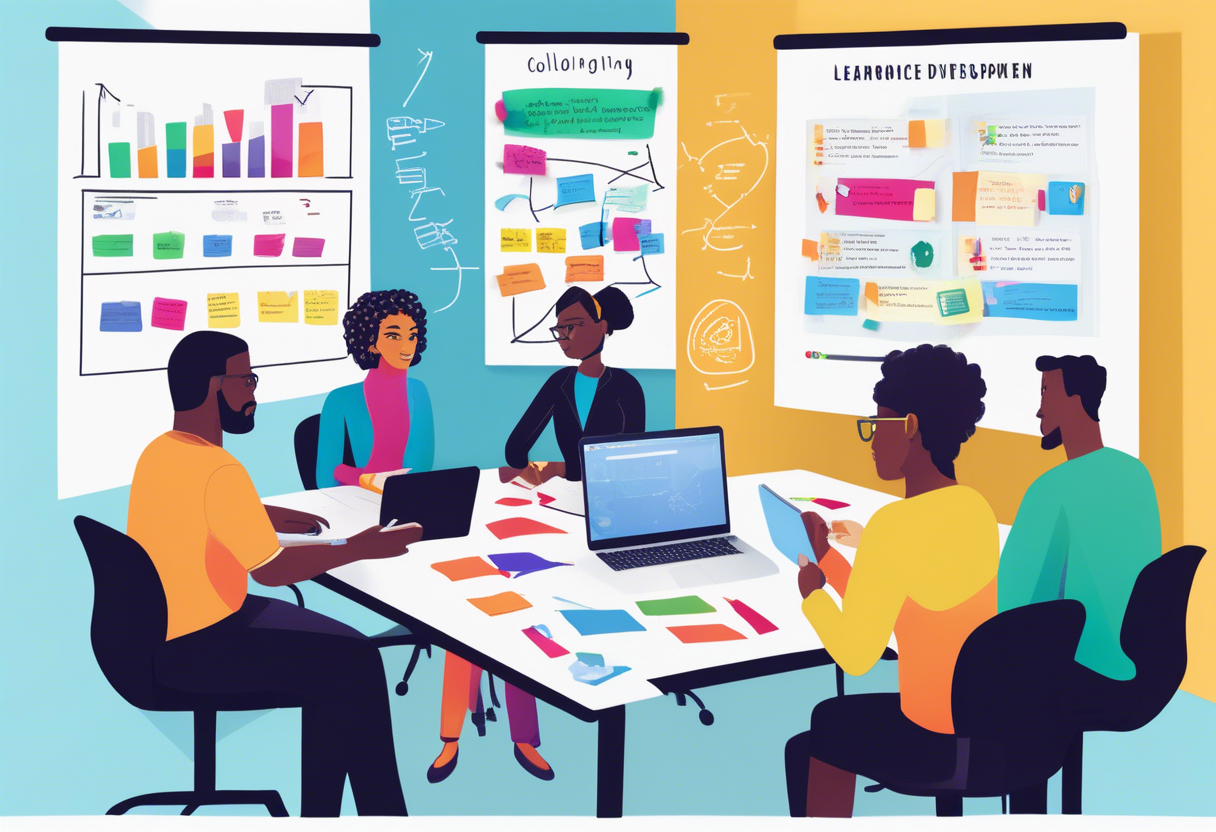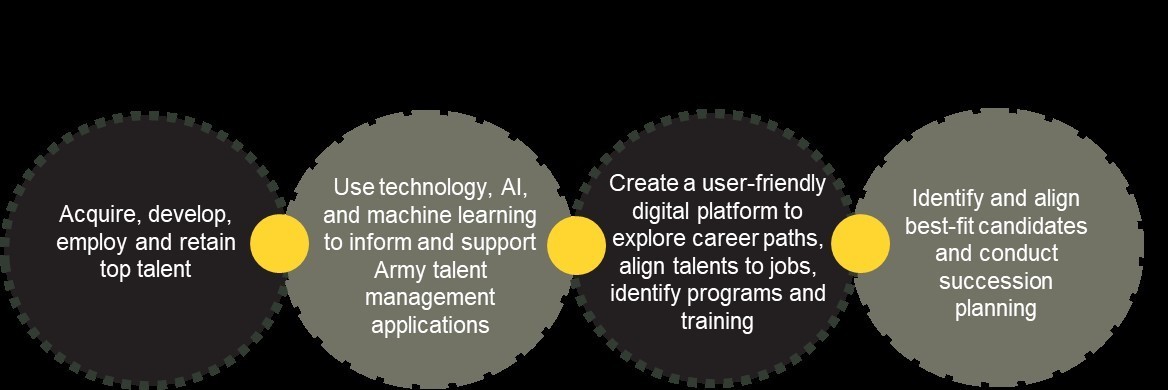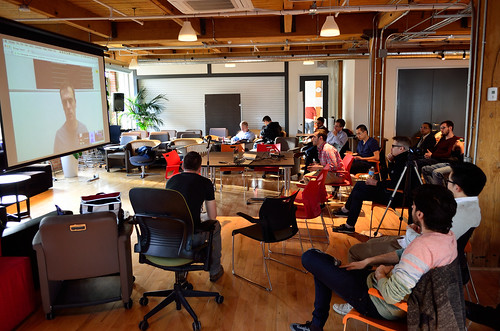
In our busy work lives, learning isn't just nice to have—it's a must. Building a custom learning path for your team can make a big difference. Companies with strong learning cultures are 92% more likely to come up with new ideas. When you create a learning journey that fits each person, it not only keeps them interested but also helps them grow in ways that match your company’s goals. Think about a workplace where everyone has the skills they need to shine, thanks to a learning plan made just for them. Here, we'll walk you through how to create these learning paths, so your team is ready for anything today and tomorrow. Whether you're in HR or managing a team, this guide will help you build a culture of ongoing improvement. Ready to start?
Step-by-Step Guide to Creating a Tailored Learning Path for Employee Development
Identify Individual Learning Needs
Conduct assessments such as self-assessments, performance evaluations, and interviews
To create a learning path that fits each employee, you first need to understand their unique learning needs. This starts with thorough assessments:
- Skills gap analyses, self-assessments, and performance evaluations paint a clear picture of what an employee can do now and what they need to work on.
- Pre-assessments and 360-degree feedback help employees see their skills, strengths, and areas for improvement.
- Interviews add a personal touch, letting managers dig into an employee's career goals and learning preferences.

These assessments lay the groundwork for a learning path tailored to each person's needs. For more insights, check out Disprz's guide on creating learning paths.
Analyze skills gaps to understand competencies, strengths, and weaknesses
Once assessments are done, the next step is to analyze the results to spot skills gaps. This involves:
- Comparing what skills an employee has with what they need for their current role and future goals.
- Identifying which skills need boosting and which strengths can be built on.
- Highlighting weaknesses that might hold them back.
This gives a full view of what they need to develop. A skills gap analysis is key to pinpointing these gaps.
Determine learning preferences and career aspirations
Every employee has their own learning style and career goals, and these should shape their learning path. Some might like hands-on learning, while others prefer theory or online courses. Knowing these preferences makes the learning path engaging and effective. Aligning the path with their career goals not only motivates them but also ensures the skills they gain are useful for their growth. The LumApps guide offers strategies for building impactful learner profiles.
Align Learning Paths with Organizational Goals
Consider the company’s strategic objectives
A good learning path should meet individual needs and align with the organization's goals. This ensures the skills developed help the company succeed. Understanding the company’s long-term goals, like entering new markets or adopting new tech, can guide employee development focus areas.

This strategic alignment ensures learning paths benefit both employees and the organization. Learn more about aligning learning objectives with business goals in this guide.
Ensure learning paths support both individual growth and organizational success
Balancing personal and company goals is crucial for a successful learning path. While personal development is important, it should tie into the company’s growth strategies. For example, if a company wants to boost digital skills, employees should be encouraged to learn these skills. This dual focus makes learning paths mutually beneficial, fostering a culture of growth and innovation. Cezanne HR provides insights into creating learning journeys that support both individual and organizational success.
Define Clear Learning Objectives for Path Creation
Set SMART goals for each employee’s learning path
Setting clear, achievable learning objectives is key to an effective learning path. SMART goals—Specific, Measurable, Achievable, Relevant, and Time-bound—offer a structured framework to guide the learning process:
- Each goal should be clear, with measurable outcomes to track over time.
- This approach clarifies what’s expected and gives employees a roadmap to success.
For more on SMART goals, visit Disprz's guide.
Address identified skill gaps and career goals
Learning objectives should directly tackle the skill gaps identified and align with career aspirations. Focusing on these areas makes the learning path more relevant and impactful. For instance, if an employee wants a leadership role, objectives might include management skills and strategic thinking. This targeted approach ensures the learning path is comprehensive and tailored to the individual’s career journey. Cezanne HR discusses how learning objectives can guide content selection and progress tracking.
Build Comprehensive Learner Profiles
Capture existing skills and knowledge gaps
Creating a detailed learner profile for each employee is crucial for a personalized learning path. This profile should cover the employee’s current skills and knowledge gaps. Documenting these details ensures the learning path fits the employee's specific needs, making it more effective and engaging. The LumApps guide provides a detailed approach to creating learner profiles.
Identify learning styles, career aspirations, and motivations
Besides skills and knowledge gaps, the learner profile should include learning styles, career aspirations, and motivations. Knowing if an employee learns best through visuals, hands-on experience, or listening can help pick the right learning materials. Also, understanding their career goals and motivations helps design a learning path that meets current needs and prepares for future opportunities. This holistic approach makes the learning path engaging and aligned with personal and professional goals. LumApps emphasizes understanding learning preferences.
Design the Learning Path Structure
Organize content into logical sections or modules
After setting up learner profiles, the next step is structuring the learning path into logical sections or modules. This breaks down learning into manageable chunks, making it easier to absorb and apply new knowledge. Each module should focus on a specific skill, building on the previous ones to create a cohesive learning journey. This modular approach allows flexibility and adaptability, customizing the learning path to meet each employee's needs. GoSkills provides insights into structuring learning paths effectively.
Use tools like learning path builders to sequence learning materials
To sequence learning materials effectively, organizations can use tools like learning path builders. These tools help organize and sequence content, ensuring each module builds on the last. Using learning path builders creates a structured learning path that guides employees through the process logically and efficiently. This enhances the learning experience and ensures employees systematically acquire the skills and knowledge they need. Disprz highlights using learning path builders for sequencing materials.
Curate Relevant Learning Content
Select content that addresses development needs and preferences
Choosing relevant learning content is key to an effective learning path. Content should directly address development needs identified during assessments and align with learning preferences. This could include:
- E-learning modules
- Articles
- Interactive workshops
- Hands-on training
By selecting relevant and engaging content, organizations can keep employees motivated and committed to their learning journey. Disprz provides guidance on selecting appropriate learning content.
Include e-learning modules, articles, and interactive workshops
A diverse range of learning materials can boost a learning path's effectiveness. E-learning modules offer flexibility, letting employees learn at their own pace. Articles provide in-depth insights, while interactive workshops offer hands-on learning and collaboration. Including a mix of learning styles caters to different preferences, ensuring the learning path is comprehensive and engaging. LumApps discusses the importance of curating diverse content.
Implement the Learning Path
Provide access to tailored learning materials
Once the learning path is designed, it's important to give employees access to the tailored materials. This could mean:
- Setting up e-learning accounts
- Distributing reading materials
- Scheduling workshops
Ensuring easy access to these materials is crucial for success, enabling employees to engage with the content at their own pace. Disprz offers strategies for providing access to learning materials.
Guide employees through the structured path with appropriate permissions
Besides access to materials, organizations should guide employees through the learning path with the right permissions and support. This might involve mentors or coaches providing guidance and feedback, or regular check-ins to monitor progress. Providing support ensures employees stay on track and motivated throughout their learning journey. GoSkills offers insights into guiding employees through learning paths.
Monitor Progress and Provide Support
Track learner engagement and progress through assessments and feedback
Monitoring progress is crucial in the learning path process. Tracking engagement and progress through assessments and feedback ensures employees meet their learning objectives and acquire necessary skills. Regular assessments give insights into progress, while feedback identifies areas for improvement and adjusts the learning path as needed. Disprz emphasizes the importance of tracking progress.
Offer personalized feedback and adjust learning paths as needed
Personalized feedback keeps employees motivated and engaged in their learning journey. Constructive feedback helps employees understand their strengths and areas for improvement, adjusting the learning path to better meet their needs. This might mean adding new materials, changing module sequences, or providing extra support. Offering personalized feedback and adjusting learning paths ensures employees stay engaged and motivated. LumApps discusses the benefits of personalized feedback.
Encourage Continuous Learning and Adaptation
Allow flexibility in pacing and update learning paths over time
Continuous learning and adaptation are essential for long-term success. Allowing flexibility in pacing accommodates each employee’s unique needs, ensuring they learn at their own pace. Learning paths should be regularly updated to reflect changes in roles, skills, and organizational priorities.

This might mean adding new materials, revising objectives, or incorporating new technologies. Allowing flexibility and updating learning paths ensures employees stay engaged and motivated. Disprz discusses the importance of flexibility in learning paths.
Reflect changes in roles, skills, and organizational priorities
As organizations evolve, so do the roles and skills needed. Learning paths should reflect these changes, ensuring employees have the skills and knowledge to thrive. This might mean adding new modules for emerging skills, revising objectives to align with new priorities, or incorporating new technologies. Reflecting changes in roles, skills, and priorities keeps learning paths relevant and effective, supporting both individual and organizational success. Cezanne HR offers insights into adapting learning paths to changing needs.
In conclusion, creating a tailored learning path for employee development involves identifying learning needs and aligning them with organizational goals. By defining clear objectives, building detailed learner profiles, designing structured paths, curating relevant content, and implementing and monitoring the process, organizations can equip employees with the skills and knowledge they need for growth. Encouraging continuous learning and adaptation ensures learning paths stay relevant and effective in a dynamic business environment.
Frequently Asked Questions
Tailored Learning Path Creation FAQs
Key Benefits of Personalized Learning Paths for Employee Development
Personalized learning paths offer numerous advantages:
- Skill Development: They enable employees to build skills step by step, fostering ongoing growth and mastery GoSkills.
- Engagement: By aligning learning goals with both individual and organizational objectives, these paths make learning more engaging GoSkills.
- Diverse Learning Styles: They cater to various learning styles by incorporating resources like videos and quizzes, enhancing engagement and retention LearnExperts.
- Pacing: Microlearning allows employees to learn at their own speed Thinkific.
- AI Integration: AI-powered platforms elevate the experience by customizing content based on performance Whatfix.

Effective Assessment of Employee Learning Needs
To effectively assess employee learning needs:
- Training Needs Analysis: Begin with analyzing who the learners are, their current skills, and identify any gaps GoSkills.
- Skills Assessments: Use assessments to pinpoint skill gaps and guide content focus ProProfs.
- Role and Experience Consideration: Understanding their roles and experience levels aids in crafting relevant learning paths ProProfs.
- Goal Setting: Establish clear learning goals that align with organizational objectives ProProfs.
Best Tools and Platforms for Personalized Learning Path Creation
Consider these tools for creating personalized learning paths:
- Moodle and Canvas: These platforms are excellent for creating personalized paths, offering features like progress tracking and content organization Whatfix.
- Digital Adoption Platforms (DAP): They automate delivery and adjust content based on learner progress Whatfix.
- AI-Powered Platforms: Such platforms personalize learning by adapting content to individual needs Whatfix.
- Course Builders like GoSkills: These offer structured methodologies for designing learning paths GoSkills.
